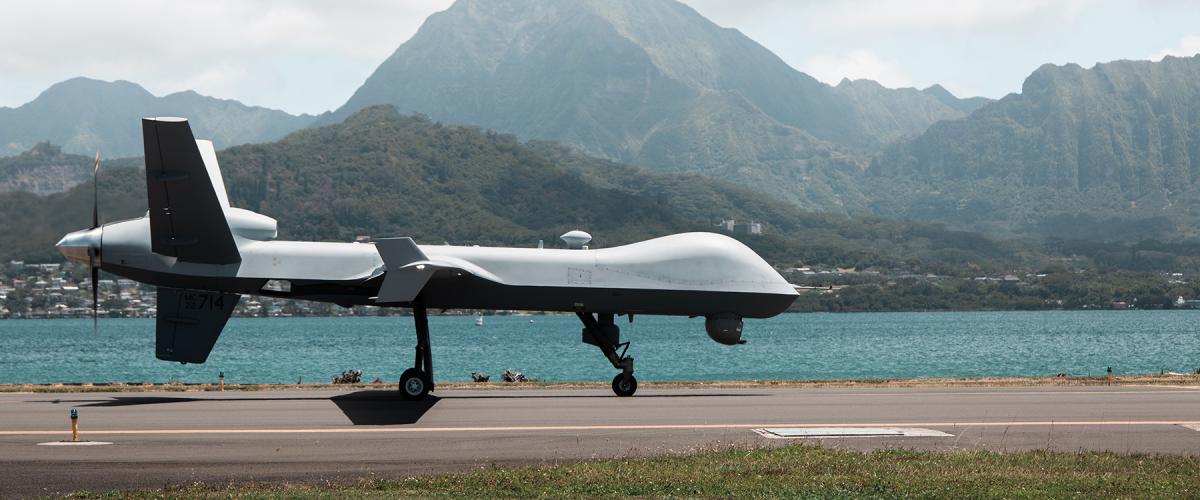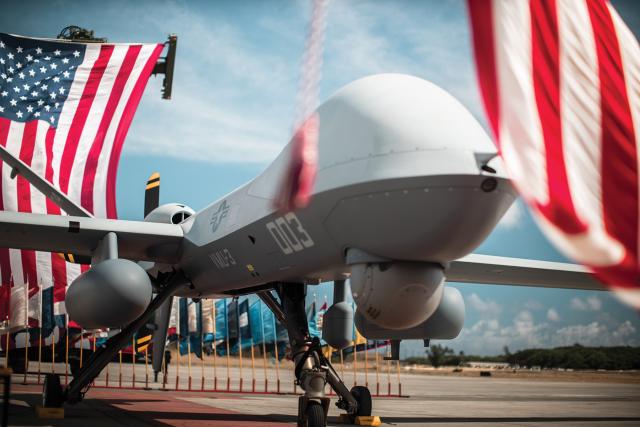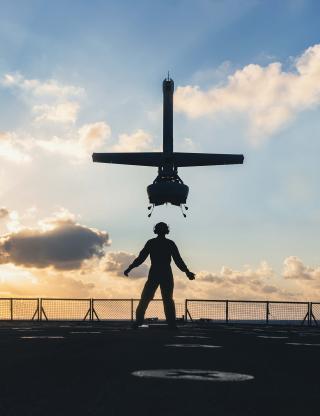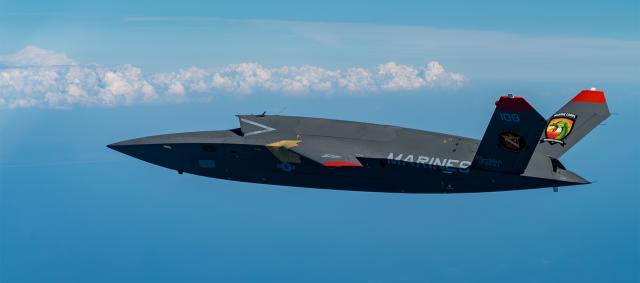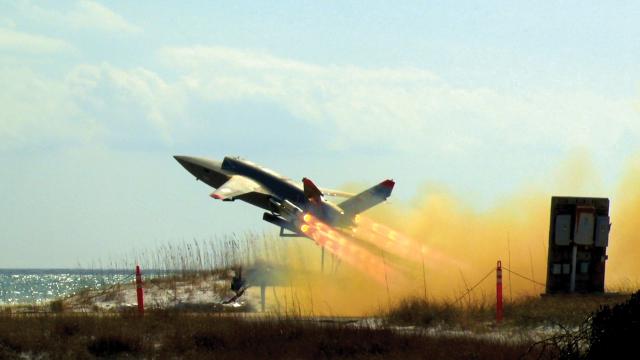The Marine Corps is deadly serious about unmanned aerial vehicles (UAVs), the flying element of unmanned aerial systems (UASs)—the latter includes not only the aircraft, but the ground control station, launch/recovery elements, and necessary crew.
Deadly is not an exaggeration. While many of the UAVs—such as the V-BAT—with which the service is experimenting are designed principally for intelligence, surveillance, and reconnaissance (ISR) or tactical resupply missions, the service is also taking a close look at the Kratos XQ-58 and learning to use the MQ-9 Reaper.
MQ-9 Reaper
The Marine Corps moved from experimentation to implementation with the MQ-9 Reaper in recent months. The medium-altitude, long-endurance UAV can be remotely piloted or operate autonomously. While it is very useful for ISR, the MQ-9 has a payload capacity of 850 pounds internally and an additional 3,000 pounds on external hardpoints. Budget request documents for 2024 released by the Defense Department Comptroller say the system will “provide standoff sensing and C4 [command, control, communications, and computers] capabilities,” with no mention of weapons, but the capability exists. Air Force MQ-9As have carried AGM-114, Hellfire II laser-guided missiles, and GBU-12 500-pound laser-guided bombs.
V-BAT
The service has taken a keen interest in the Shield AI V-BAT UAS. In particular, the service’s Special Operations Command is experimenting with the vertical-takeoff-and-landing aircraft. The service’s Multi-Mission Tactical Uncrewed Aircraft Systems program has conducted several rounds of testing, including in February 2024, when the 26th Marine Expeditionary Unit (Special Operations Capable) tested V-BATs during its scheduled deployment with the Bataan Amphibious Ready Group in the Mediterranean. The 125-pound aircraft uses a ducted-fan engine, has an endurance of about 10 hours, and requires a crew of only two.
XQ-58A Valkyrie
Kratos proposed the Valkyrie to the U.S. Air Force as a “loyal wingman,” a semiautonomous aircraft that can support a manned fighter at altitudes up to 45,000 feet (the F-35’s ceiling is about 50,000 feet). It entered the Air Force’s “Skyborg” competition in 2020, and testing reportedly continues.
In December 2022, the Marine Corps awarded a $15.5 million contract to Kratos for two XQ-58s as part of its Penetrating Affordable Autonomous Collaborative Killer—Portfolio (PAACK-P) program. Testing began in October 2023. In February 2024, the second of up to six rounds of testing took place at Eglin Air Force Base in Florida. The Marine Corps says it envisions that XQ-58s could “provide capability to the Marine Air Ground Task Force that ranges from electronic warfare support to delivering or supporting lethal fires and kill chains.”



